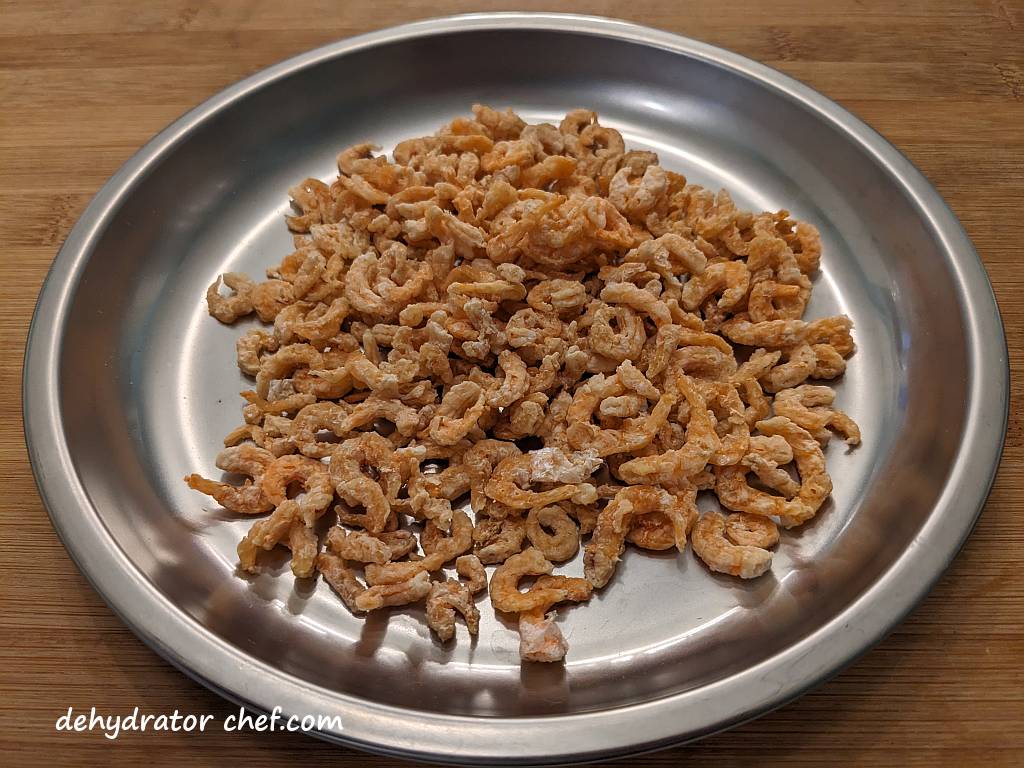
How to Dehydrate Shrimp
This is our step-by-step guide on how to dehydrate shrimp. Dehydrating small salad shrimp is really easy to do. Many of our dehydrated camping meal recipes use it in one way or another. So it just makes good sense to dehydrate what you use day-to-day and have it on hand in your pantry for when it’s needed.
Equipment
- Removable mesh screen insert (one for each dehydrator tray)
- Common kitchen tools (including cutting boards, chef's knife, spatula, strainer, colander, etc.)
- Canning jars with tight-fitting lids
- Desiccant packets for moisture control (optional)
Ingredients
- 16 ounces shrimp (250-300 shrimp per pound)
Instructions
Process the Shrimp
- Using a wire mesh strainer, rinse the salad shrimp to remove salt.16 ounces shrimp
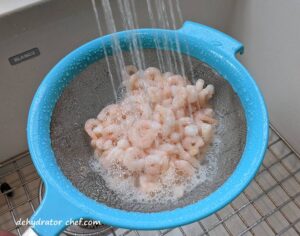
- Inspect the shrimp as you rinse it, removing anything that shouldn't be there. Despite the use of modern cleaning equipment, it is not always possible to remove all foreign materials.
- Drain the rinsed shrimp in a colander.
Prepare the Dehydrator
- Spread and layer the processed shrimp on the removable mesh screen inserts; one 16-ounce package of salad shrimp will fill two 13.5-inch round dehydrator trays. If it’s too crowded, prepare another tray.
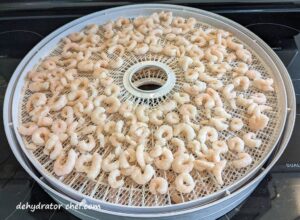
Dehydrate the Shrimp
- Set the dehydrator thermostat temperature to 160 °F (71 °C). Dry for 10 to 12 hours until done.
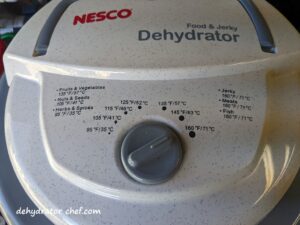
When are the Dehydrated Shrimp Done
- When done, the dehydrated shrimp will be brittle and hard little nuggets.
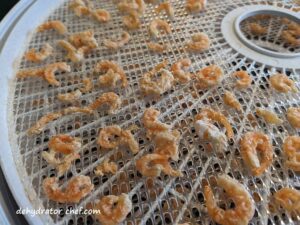
Equalizing and Conditioning the Dehydrated Shrimp
- After a short cooling period, loosely pack the dried shrimp into a clean, dry canning jar with a tight-fitting lid, leaving some headspace.
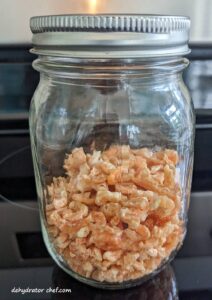
- Every day, for 7 to 10 days, check the jar for moisture. Roll the jar contents around and note any clumping or sticking. If seen, put it all back on the dehydrator for several more hours.
- If you notice any mold at all, even the slightest bit, throw it all out.
Storing the Dehydrated Shrimp
- Use appropriate-sized canning jars for storage. Depending on how well you dehydrate it and your pantry storage conditions, the dehydrated shrimp should keep for at least 4 or 5 months.
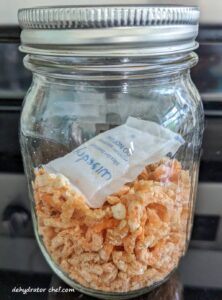
- An optional food-safe desiccant packet will aid with moisture control and enable a longer shelf life.
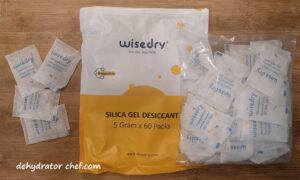
- Attach or include a label describing the jar contents and the date the product was dehydrated. The label identifies the canning jar contents, and the date helps with the rotation schedule. A first-in, first-out rotation helps us to use items that have been on the shelf the longest, so we're using the oldest food first.
Notes
Drying times will vary depending on your dehydrator and environmental conditions. Refer to your dehydrator owner’s manual for recommended temperatures and times for dehydrating specific foods. Remember to use drying times as a guide.
Note: The shrimp ingredient list includes added salt. It is assumed that some, but not all, of the sodium would be washed away in Step 1, and the actual sodium content would be less than shown.
Note: Dehydrating shrimp will roduce a strong fish smell. So you might want to dry shrimp in the garage or outdoors; otherwise, open the windows and get a fan going.
Nutrition
Serving: 15gCalories: 60kcalCarbohydrates: 36gProtein: 12gFat: 1gCholesterol: 15mgSodium: 370mg
Nutrition information is only an estimate and may differ depending on the ingredients you use.
Tried this recipe?Let us know how it was!